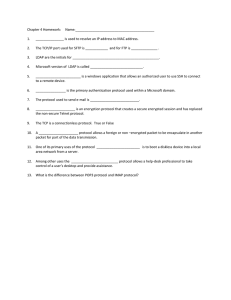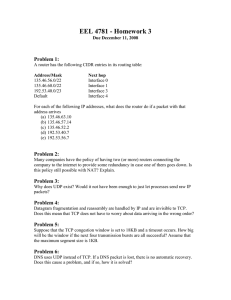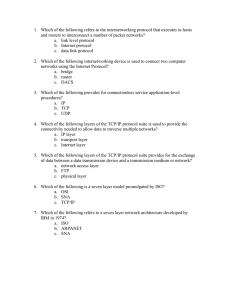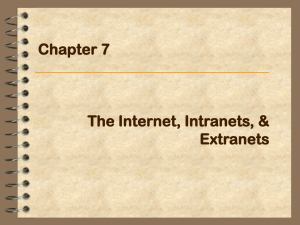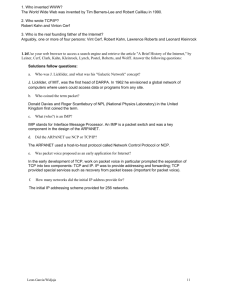The Design Pholosophy of the DARPA Internet Protocols
advertisement
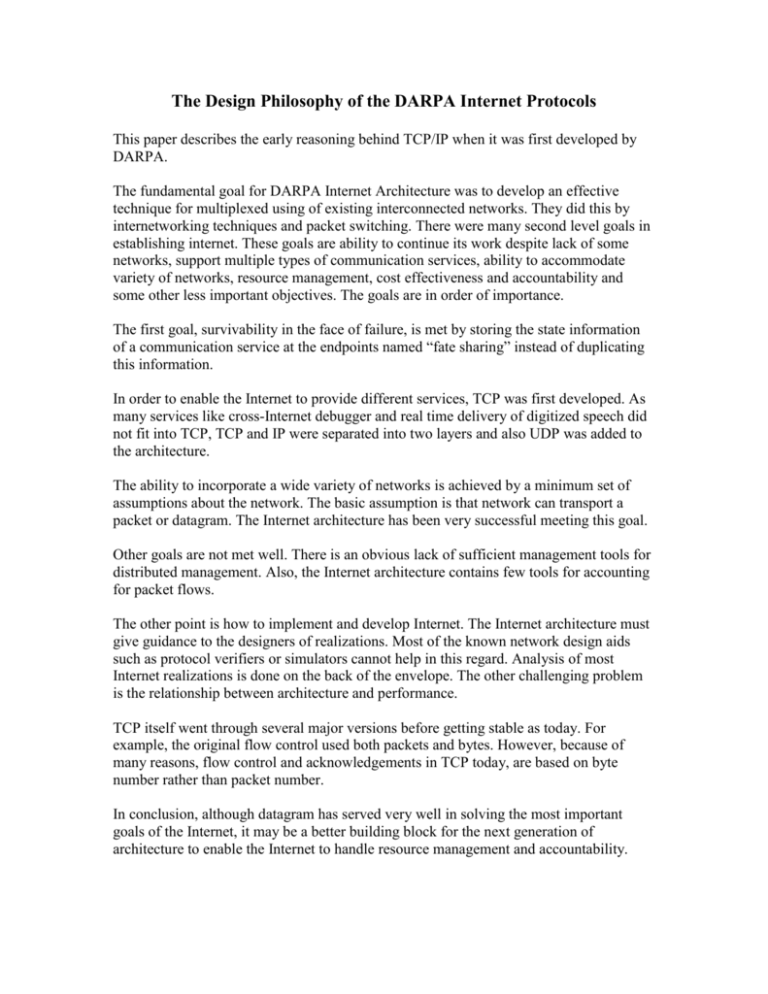
The Design Philosophy of the DARPA Internet Protocols This paper describes the early reasoning behind TCP/IP when it was first developed by DARPA. The fundamental goal for DARPA Internet Architecture was to develop an effective technique for multiplexed using of existing interconnected networks. They did this by internetworking techniques and packet switching. There were many second level goals in establishing internet. These goals are ability to continue its work despite lack of some networks, support multiple types of communication services, ability to accommodate variety of networks, resource management, cost effectiveness and accountability and some other less important objectives. The goals are in order of importance. The first goal, survivability in the face of failure, is met by storing the state information of a communication service at the endpoints named “fate sharing” instead of duplicating this information. In order to enable the Internet to provide different services, TCP was first developed. As many services like cross-Internet debugger and real time delivery of digitized speech did not fit into TCP, TCP and IP were separated into two layers and also UDP was added to the architecture. The ability to incorporate a wide variety of networks is achieved by a minimum set of assumptions about the network. The basic assumption is that network can transport a packet or datagram. The Internet architecture has been very successful meeting this goal. Other goals are not met well. There is an obvious lack of sufficient management tools for distributed management. Also, the Internet architecture contains few tools for accounting for packet flows. The other point is how to implement and develop Internet. The Internet architecture must give guidance to the designers of realizations. Most of the known network design aids such as protocol verifiers or simulators cannot help in this regard. Analysis of most Internet realizations is done on the back of the envelope. The other challenging problem is the relationship between architecture and performance. TCP itself went through several major versions before getting stable as today. For example, the original flow control used both packets and bytes. However, because of many reasons, flow control and acknowledgements in TCP today, are based on byte number rather than packet number. In conclusion, although datagram has served very well in solving the most important goals of the Internet, it may be a better building block for the next generation of architecture to enable the Internet to handle resource management and accountability.

